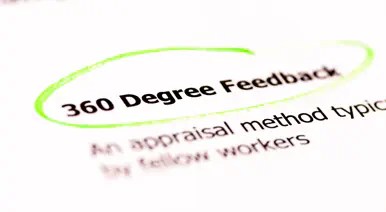Managing Teamwork
Beyond Teambuilding Seminars
Managers value teamwork because it results in a more effective and profitable organization. In addition to the typical benefits expected from teamwork, our research shows that workgroups with higher teamwork:
- care more about the quality of their work,
- are better at learning from their experiences (acquiring and using information), and
- are better able to resolve their problems at work.
What can you do when teamwork is low?
The 1990’s solution: the teambuilding seminar. Many groups have found team-building experiences to be helpful. However, when you take a group of employees who have not worked well as a team in the past and have them attend a teambuilding seminar, the effects of the seminar seem to last for a few months and then disappear.
Why? Surprisingly, it is probably not a reflection of the quality of the seminar. Our employee survey research identifies factors in the workplace that can enhance or hinder teamwork. If these factors are not identified and managed, like trying to get your garden to grow in weed killer, you may be trying to “force” teamwork to occur in a work environment that is actively resisting your efforts.
Pay and Recognition
First, examine your system of pay and employee recognition. What behaviors are rewarded by pay (increases, bonuses, or commissions)? What behaviors are rewarded by promotions? If your answer is “individual achievement” or “individual performance,” then you’ve discovered a portion of your “problem”: your own reward system. Restructure these systems to include group and team achievements.
Assuming that you have managed pay and recognition, of the factors inside your organization, which ones affect teamwork?
Case Study
The organization is a white collar, generally progressive company with over 10,000 employees nationwide. Management considers teamwork essential to the organization’s success and teamwork is already part of the pay and recognition structure. As part of a larger project whose goal was to create an employee-driven, employee survey improvement process [our Continuous Improvement Process], NBRI identified four factors that influenced teamwork within workgroups. When these four factors were high, teamwork was high. When the four factors were low, teamwork was low. These factors are similar to what we have found in other organizations.
Encouragement
The strongest and most consistent factor that increased teamwork was managers encouraging teamwork. When managers helped employees work together as a team, resolved disagreements, and supported team efforts, the group as a whole exhibited higher teamwork.
Action: Have managers encourage teamwork. Explain why teamwork is important. Work with the group to specify the actions and behaviors that constitute teamwork for this group (e.g., the behaviors needed for middle managers will be quite different from those needed for file clerks). This almost seems elementary. However, we find that managers may create competition among employees, show favoritism, or may simply be aloof or uninvolved. Are you as a manager doing things that inhibit teamwork?
Action: Managers should also help resolve disagreements within workgroups. If disagreements are not solved by group members within a reasonable amount of time, help them solve the issue before long-term grudges are cemented into group relationships.
Blame
The second strongest factor to affect teamwork was the degree to which group members blamed each other for problems. Our employee surveys have shown that frequently, blame is the strongest factor that affects teamwork. The more that people blame each other (rather than solve their problems), the less they are able to work as a team.
Action: Strive to create a blame free work environment. The first step may be to admit there is a problem. Some groups exist in a state of denial. However, when you ask them, “What is the first question that people ask when something ‘bad’ happens?” and their answer is, “Who did that?” It may be easier to see that their first reaction is to find someone to blame for the problem.
Important: Creating a blame-free environment does not mean that people are not accountable for their actions. You hired intelligent, competent people. Most mistakes are a function of work procedures.
Action: Refine work and interoffice procedures to prevent problems and mistakes. Create a regular cycle of problem recognition and resolution.
Action: Check for adequate authority. Consistently, employee surveys show that blame is higher in workgroups where employees don’t have enough authority to do their jobs. If employees have enough authority, when an unexpected problem does occur, they handle it. If they don’t have enough authority, people tend to start blaming each other for the problem.
Action: Review work rules and guidelines. Are they created to help people do their jobs? Or are they created to control people? Frustrating red-tape or out-dated procedures can create problems that hinder teamwork.
Planning
Groups that did a better job of planning had less blame and more effective teamwork than groups that did not plan well. Caution: this is not to say that “more planning is better” or that “all planning is equal.” Some groups (typically in older companies) can become absorbed with planning. This can lead to inflexibility and being slow to respond to changes. On the other hand, young companies are often characterized by moment-by-moment changes and decisions.
Action: Identify even small parts of jobs that would benefit from additional planning. The more your company is growing and changing or the more you have to respond to sudden events in the marketplace, the more limited your planning may be. Ask, “What are the one or two things, that if we planned them better, would help us the most?” Some things you consider planning may be a form of teamwork itself. Example: a warehouse team wanted better planning because they were frequently out-of-stock on popular items. Their analysis revealed that they needed better and more effective teamwork with marketing and sales so they could anticipate promotions and specials. Once accomplished, their work was more pleasant, customers were more satisfied, and the company was stronger.
Role Clarity
When employees know what is expected of them, which aspects of their jobs are most important, and how their performances will be evaluated, workgroups typically will have higher teamwork. All of us have seen baseball games where two outfielders ran for the same ball, then looked at each other as the ball dropped to the ground between them. Employee surveys show that if people are not clear about their roles and how they relate to each other in the group, effective teamwork may be difficult to achieve.
Action: Make job expectations and performance measures clear. Be sure to include both typical and exceptional circumstances. As much as possible, managers should focus on the goals for each person (or the group) rather than prescribing specific work methods. Allow the individuals who perform the tasks to suggest how those goals will be accomplished. Managers will get what they want while employees will benefit from increased involvement, increased freedom and authority, and procedures that are more refined to their needs.
Teamwork is an important factor to manage well. The trick is to realize that coaching may not be enough. You need to manage the factors in the workplace that influence effective teamwork. Analogy: just telling someone to “jump higher” doesn’t reduce the force of gravity that affects how they can respond. Just telling people to act as a team does not free them from constraints posed by factors in the environment. Once you manage those factors, you may see team building exercises become more effective and last longer.
Each organization is different. For your specific organization, administering an employee survey can identify these environmental factors. The Continuous Improvement Process from NBRI puts that information into action.




























 By submitting this form you agree to our
By submitting this form you agree to our